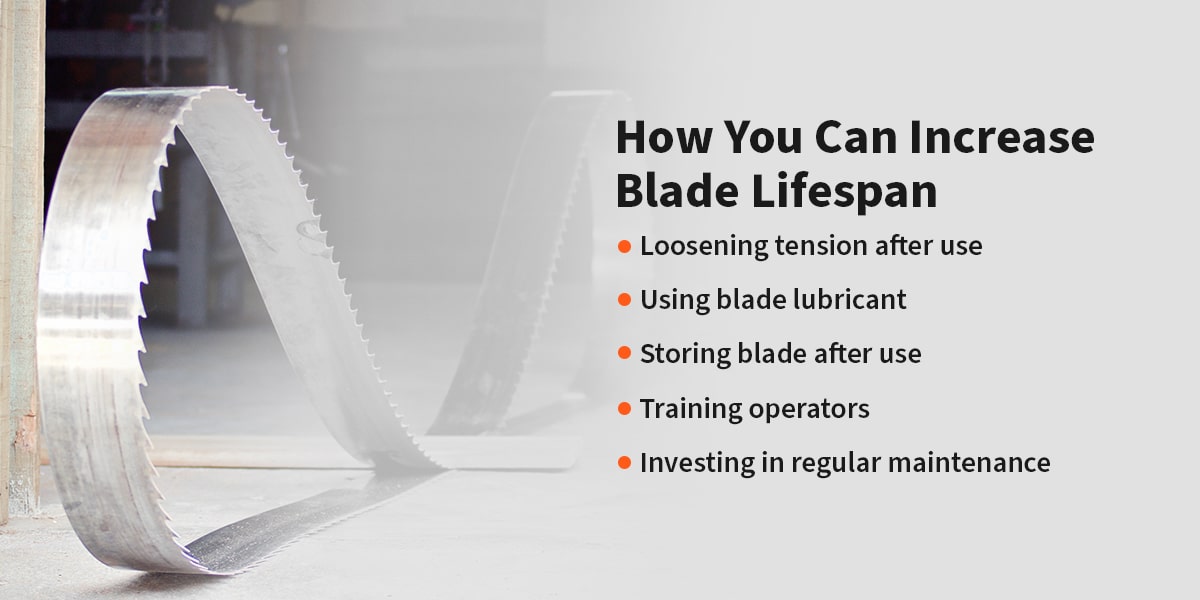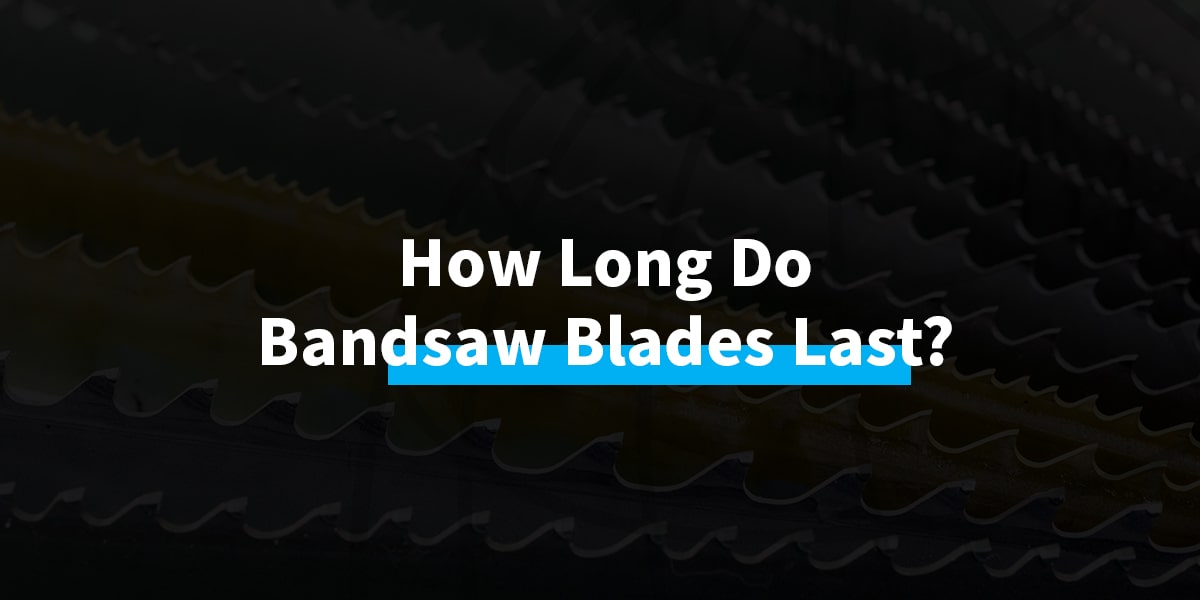Looking to find out how long a bandsaw blade lasts? You’re in the right place! Whether you’re a woodworking enthusiast or just starting out, the lifespan of a bandsaw blade is an important factor to consider. In this article, we’ll dive into the factors that affect blade longevity, tips to extend its lifespan, and signs that it’s time for a replacement. So, let’s get started and learn all about bandsaw blades!
Picture this: you’re in the middle of a woodworking project, the bandsaw humming away, when suddenly, the blade snaps. Frustrating, right? Understanding how long a bandsaw blade lasts can save you time, money, and avoid those unexpected breaks. While the lifespan of a blade depends on various factors, such as usage, material, and maintenance, there are key indicators to look out for.
Whether you’re cutting through hardwood, softwood, or even metal, the condition of your bandsaw blade is crucial for clean and accurate cuts. So, join us as we unravel the mysteries of bandsaw blades and discover how you can keep them in tip-top shape!

How Long Does a Bandsaw Blade Last?: Cutting Through the Details
The Factors that Affect Bandsaw Blade Lifespan
When it comes to the lifespan of a bandsaw blade, several factors come into play. Firstly, the quality and material of the blade itself play a significant role. Blades made from high-quality steel tend to last longer compared to cheaper alternatives. The thickness of the blade is also important, as thicker blades are generally more durable and have a longer lifespan.
Another crucial factor is the type of material being cut. Bandsaw blades are often used for cutting different materials such as wood, metal, or plastic. Each material has unique properties that can impact the life of the blade. For example, cutting hardwoods may wear down the blade faster than softwoods due to their density and hardness. Similarly, cutting metal can cause the blade to heat up significantly, leading to quicker wear and tear.
Finally, the cutting conditions and maintenance practices can greatly influence the lifespan of a bandsaw blade. Using the correct blade speed, feed rate, and tension is crucial to ensure the blade lasts as long as possible. Proper cooling and lubrication also help to reduce heat and friction, thereby extending the blade’s lifespan. Regular cleaning and maintenance, such as removing debris and sharpening the blade when necessary, are essential to prevent premature damage.
The Average Lifespan of Bandsaw Blades
While the lifespan of a bandsaw blade can vary depending on the factors mentioned earlier, there is a general range to consider. On average, a high-quality bandsaw blade can last anywhere from a few weeks to several months of regular use. However, it’s essential to keep in mind that this estimate can change based on the frequency and intensity of use, the material being cut, and the overall maintenance practices.
Industrial bandsaw blades used in heavy-duty applications may have a shorter lifespan due to the higher demands placed on the blade. Conversely, blades used for occasional or lighter cutting tasks may last longer. It’s also worth noting that the lifespan of a bandsaw blade can be extended through proper care and maintenance, such as regularly sharpening the teeth and ensuring the blade is properly tensioned.
In summary, the average lifespan of a bandsaw blade can range from weeks to months, but it ultimately depends on various factors, including the quality of the blade, the type of material being cut, and the conditions in which it is used.
Tips for Increasing Bandsaw Blade Lifespan
While the lifespan of a bandsaw blade is influenced by several factors, there are several steps you can take to increase its longevity:
- Choose a high-quality blade made from durable materials, such as high-speed steel or carbide-tipped blades.
- Select the appropriate blade thickness for the materials you commonly cut.
- Maintain proper tension on the blade to ensure accurate cutting and minimize wear.
- Use the correct blade speed for the material being cut, preventing unnecessary strain on the blade.
- Employ effective cooling and lubrication methods to reduce heat and friction.
- Regularly clean the blade and remove any build-up of debris that could hinder cutting performance.
- Sharpen the blade when necessary to maintain optimal cutting performance.
By following these tips, you can maximize the lifespan of your bandsaw blade and ensure consistent and accurate cutting results over an extended period of time.
Key Takeaways: How Long Does a Bandsaw Blade Last?
- A bandsaw blade can last anywhere from a few weeks to several months, depending on various factors.
- The type of material being cut and the frequency of use greatly affect the lifespan of the bandsaw blade.
- Proper blade tensioning and regular maintenance can help extend the life of the bandsaw blade.
- Using the correct blade for the specific task and avoiding excessive pressure can minimize wear on the blade.
- Monitoring blade condition and replacing it when signs of dullness or damage are seen is crucial for efficient and safe cutting.
Frequently Asked Questions
In this section, we’ll answer some commonly asked questions about the lifespan of a bandsaw blade.
1. How often should I replace my bandsaw blade?
The lifespan of a bandsaw blade can vary depending on factors like usage, material being cut, and blade quality. On average, a bandsaw blade can last anywhere from a few weeks to a few months. However, it’s crucial to monitor the blade’s condition regularly. Signs of wear, such as dull teeth or cracks, indicate it’s time for a replacement.
By replacing the blade preemptively, you can prevent damage to the workpiece and ensure smooth and accurate cuts. It is always a good idea to have spare blades on hand to minimize production downtime.
2. Can I extend the lifespan of my bandsaw blade?
Absolutely! There are several steps you can take to maximize the lifespan of your bandsaw blade. First, make sure to clean the blade after each use to remove any debris or residue. Lubricating the blade with a suitable cutting fluid can also reduce friction and heat, prolonging its life.
Using the appropriate blade for your specific cutting application is crucial as well. Different blade configurations and materials are designed for different purposes. Using the right blade will not only ensure efficient cutting but also prevent unnecessary wear and tear on the blade.
3. What are some signs that my bandsaw blade needs replacing?
There are a few indicators that can tell you when it’s time to replace your bandsaw blade. One of the most obvious signs is a decrease in cutting performance. If your blade is struggling to make clean, accurate cuts or if it’s producing excessive vibration or noise, it’s likely time for a replacement.
Inspecting the blade regularly is also important. Look for signs of fatigue, such as dull or damaged teeth, cracks, or wear along the blade’s length. If you notice any of these issues, it’s best to err on the side of caution and replace the blade.
4. Are there any maintenance tips to keep my bandsaw blade in good condition?
Absolutely! Proper maintenance is essential to extend the life of your bandsaw blade. One of the most important steps is to ensure proper tensioning. Correct tension keeps the blade running smoothly and reduces the risk of premature wear or breakage. Regularly check the tension, and adjust it as needed.
Additionally, regularly inspect the blade for any signs of damage or wear. Keep the blade clean, removing any debris or buildup, and lubricate it when necessary. By following these maintenance tips, you can keep your bandsaw blade in optimal condition, ensuring long-lasting performance.
5. Is it worth investing in a higher-quality bandsaw blade?
Investing in a higher-quality bandsaw blade can be worth it in the long run. While they may come with a higher initial cost, these blades are often made from better materials, resulting in improved durability and cutting performance. They also tend to have more advanced tooth designs that offer smoother and more accurate cuts.
Additionally, high-quality blades are less likely to suffer from premature wear or breakage, reducing the need for frequent replacements. This can ultimately save you time and money in the long term. Consider your specific cutting needs and budget to determine if investing in a higher-quality bandsaw blade is the right choice for you.

Summary
So, how long does a bandsaw blade last? Well, it depends on a few factors. The type of material you’re cutting, the quality of the blade, and how you use it all play a role. On average, a bandsaw blade can last anywhere from a few weeks to a few months. But if you take care of it, keep it clean, and use it properly, you can extend its lifespan. Remember, regular maintenance and proper storage are key to keeping your bandsaw blade in good shape.
In conclusion, there’s no set timeframe for how long a bandsaw blade lasts. It varies based on different factors. The best thing you can do is take care of your blade and replace it when it’s no longer cutting efficiently. Happy sawing!
